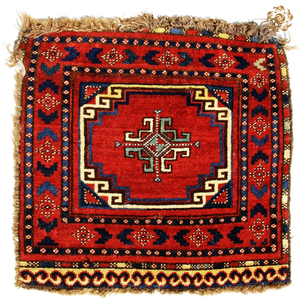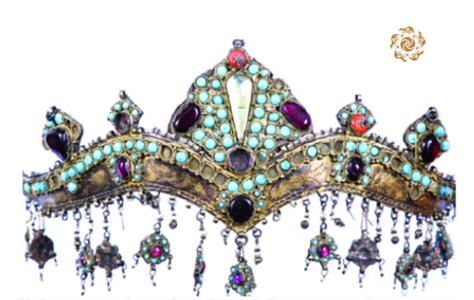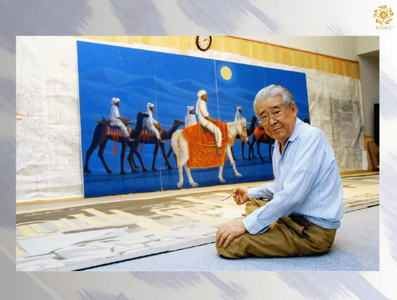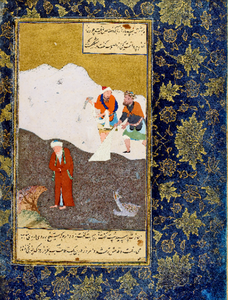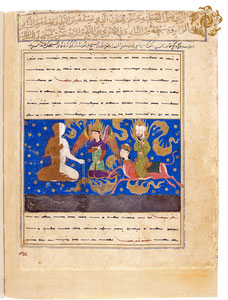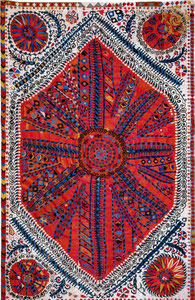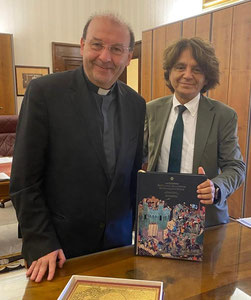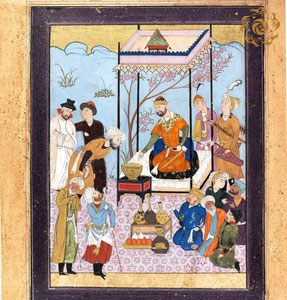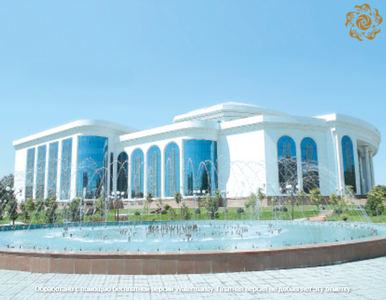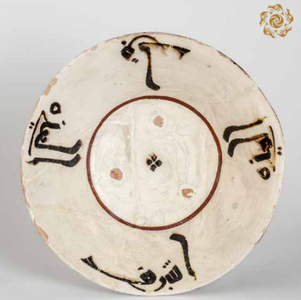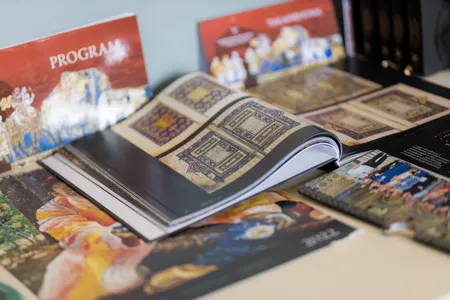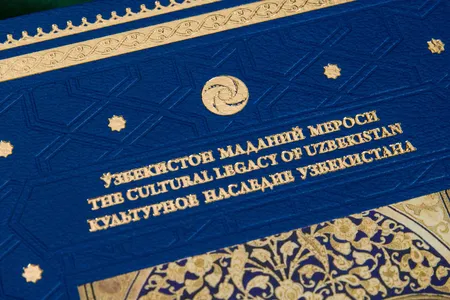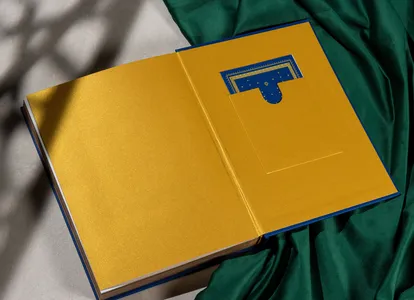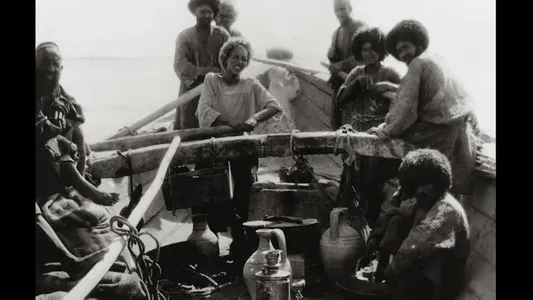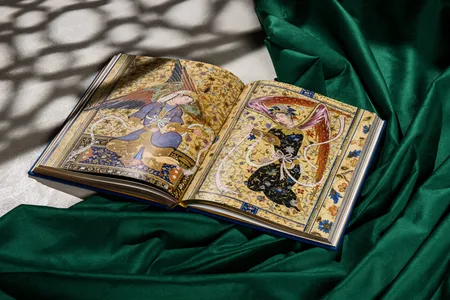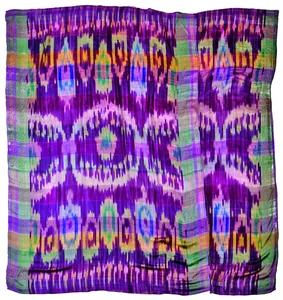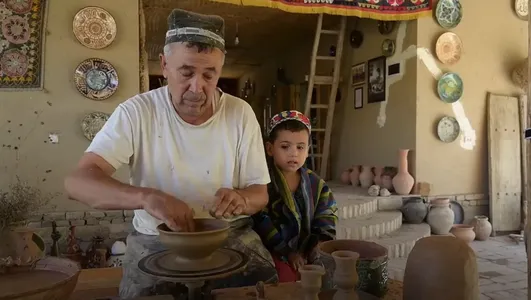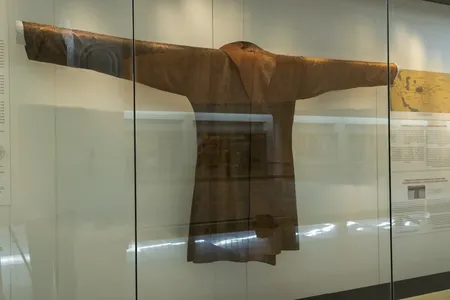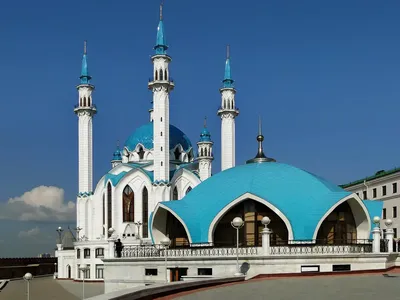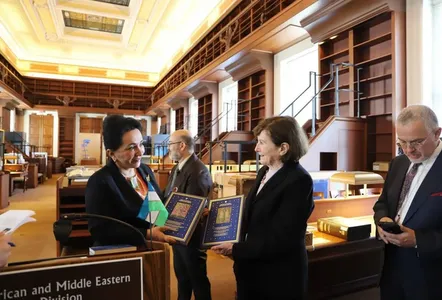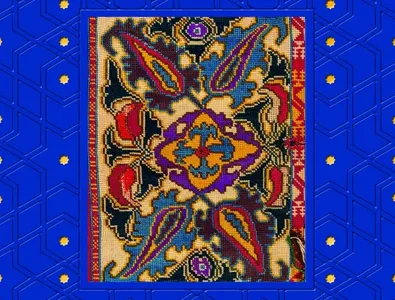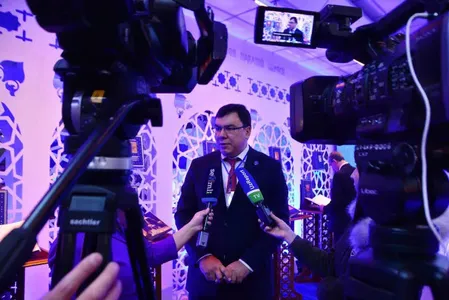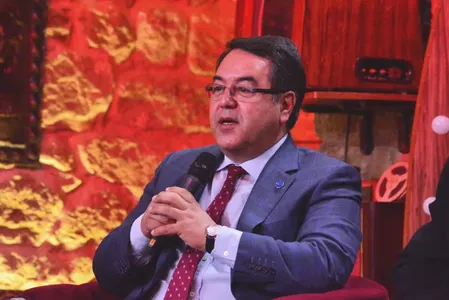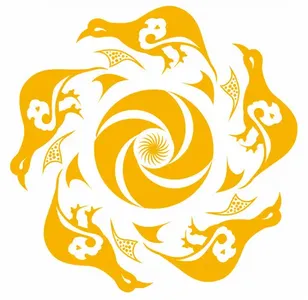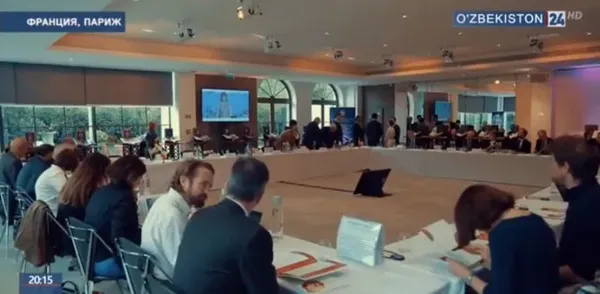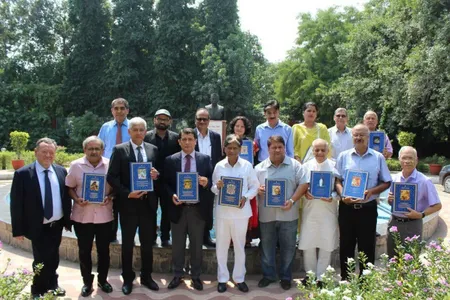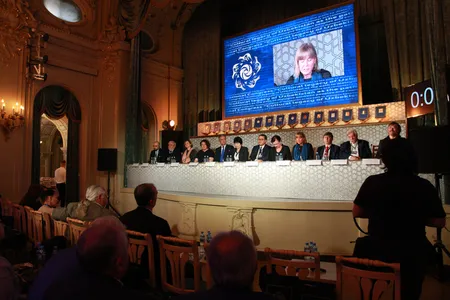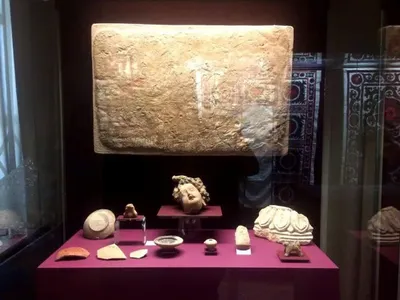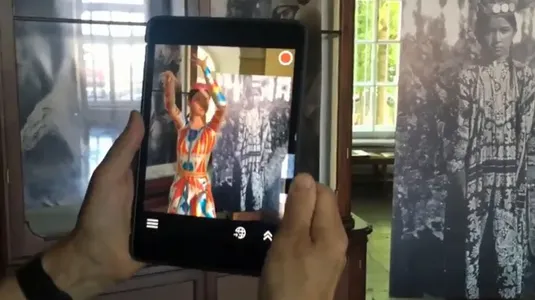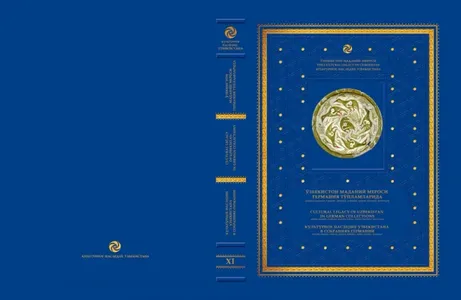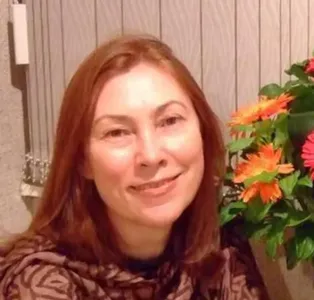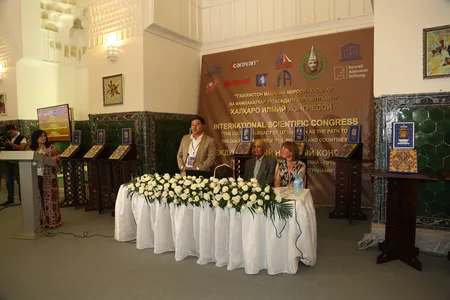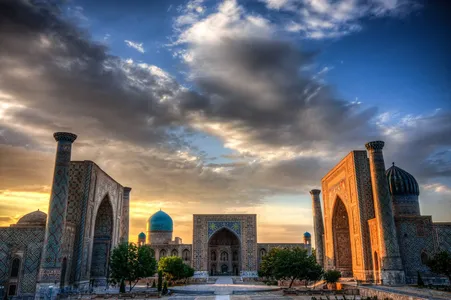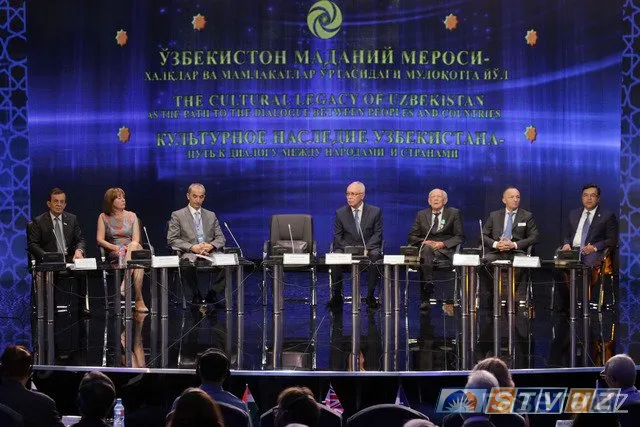
On May 15, in the morning at the international congress "Cultural Legacy of Uzbekistan – the way to dialogue between peoples and countries", a presentation of the unique project "Cultural Legacy of Uzbekistan in the assemblies of the world" was held.
The project provides for wide promotion of the national art, material and artistic culture of Uzbekistan among the general public and scientific circles of many countries of the world. It will greatly contribute to the expansion of the educational level of the younger generation.
"The project is unique in its scope and provides for the study of museum and private collections of many countries of the world, where, for various reasons, a part of the cultural legacy of Uzbekistan turned out to be. The project "Cultural Legacy of Uzbekistan in world collections" is the first project in the world to create a unified book and video catalog of the best samples of cultural and historical heritage stored in the collections of world museums and individuals," the author and project manager, Honored Journalist of Uzbekistan Firdavs Abdukhalikov emphasized in the presentation.
The implementation of the project has important not only cultural, but also social and political significance, as it will demonstrate to the whole world the exceptional care and attention of the leadership of Uzbekistan to one of the most important aspects of modern life – the attitude to its historical past and cultural heritage. A working group of the project has been created, headed by the author of the series Firdavs Abdukhalikov and the scientific supervisor, academician of the Academy of Sciences of the Republic of Uzbekistan Edward Rtveladze. The project is being implemented by world–famous scientists - archaeologists, art historians, historians, specialists and experts who have devoted their lives to studying the cultural heritage of Uzbekistan, who have already highly appreciated this project and noted its uniqueness.
Leading orientalists and art historians take part in the work on the publication. Among them are Kamola Akilova (Doctor of Art History), Azamat Zie (Doctor of Historical Sciences, Professor), Nizomiddin Makhmudov (Doctor of Philology, Professor), Akmal Saidov (Doctor of Law, Professor), Alexander Dzhumaev (Candidate of Art History), Elmira Gul (Doctor of Art History). Specialists from Russia also provide great support: Tigran Mkrtychev (Doctor of Art History at the State Museum of the East), Ekaterina Ermakova (Candidate of Historical Sciences at the State Museum of the East), Tatiana Zelyukina and Olga Polyanskaya (Candidates of Art History, State Tretyakov Gallery), Tatiana Emelianenko and Elena Kubel (Doctor of Historical Sciences and researcher at the Russian Ethnographic Museum) and many others.
All of them are here in Tashkent today, among the participants of the international congress "Cultural Legacy of Uzbekistan – the way to dialogue between peoples and countries". Each of them presents the results of the work of their area of work in the project, which means a separate volume included in this series.
The first volume is dedicated to the cultural heritage of Uzbekistan in the collections of the State Museum of the East. The director of this institution, Doctor of Historical Sciences Alexander Sedov and the head of the department of the State Museum of the East Ekaterina Ermakova told about it in detail. The first album of the series "Cultural Legacy of Uzbekistan" is dedicated to the collection of objects from Uzbekistan stored in the State Museum of the East (Moscow). The choice of this museum as the discoverer of the entire series is by no means accidental. It is dictated by a number of circumstances – in fact, since its foundation in 1918 .
This museum is connected with Uzbekistan by the closest interaction, determined both by scientific interests and personal destinies of a number of specialists who were born and studied in Uzbekistan, who worked and still work at the State Museum of the East.
The second volume includes materials on the cultural heritage of Uzbekistan in the collection of the Russian Ethnographic Museum. The contents of this book were introduced by Natalia Nikolaevna Prokopyeva, Deputy Director for Accounting, Storage and Restoration of Museum Valuables of the Russian Ethnographic Museum, and Tatiana Grigoryevna Emelianenko, Doctor of Historical Sciences, leading researcher on the traditional culture of the peoples of Central Asia of the Russian Ethnographic Museum. The presented book-album will be dedicated to the richest and most diverse collection of the Russian Ethnographic Museum in St. Petersburg. Its authors, in accordance with the specifics of the museum, along with the Uzbek collection, distinguish the Karakalpak collection, the collections of Central Asian Arabs and Bukhara Jews. Among the items provided there are genuine masterpieces of decorative and applied art of Uzbekistan. The collection, which is based on items collected by S.M. Dudin's expedition at the beginning of the last century and subsequent ethnographic expeditions of the museum staff to Uzbekistan, will be published in the volume provided for the first time.
The next volume is dedicated to the State Tretyakov Gallery. As the Doctor of Art History, Deputy Director General for Scientific Work Tatyana Karpova and art historian Olga Polyanskaya told the audience, this book-album is dedicated to the collection of contemporary paintings of Uzbekistan in the State Tretyakov Gallery. In its composition, it is in many ways unique and is distinguished by exceptionally interesting landscape works, portraits and still lifes. This collection is being published in full for the first time and will undoubtedly be of interest not only to researchers of contemporary art in Uzbekistan, but also to a wide range of readers.
Volume IV was presented by Elmira Gul, Doctor of Art History at the Institute of Art Studies of the Academy of Sciences of Uzbekistan. It is dedicated to embroidery and carpets of Uzbekistan in foreign collections. For the first time, the album book will give a fairly clear idea of some, but not all, foreign museum and private collections stored in Australia, Great Britain, Canada, the USA and Russia. The book describes in detail the types of embroidery and carpets that existed on the territory of Uzbekistan in the XIX – early XX centuries, and the additions that these types of Uzbek art make to foreign collections.
Alexander Dzhumaev, Candidate of Art History, Chairman of the research group "Makam" of the International Council for Traditional Music, told about the musical heritage, and therefore about the V volume. This book-album dedicated to the musical heritage of Uzbekistan is based on a description of a collection of musical instruments from the collection of A.F. Eichhorn, a military bandmaster and musical ethnographer. Along with this, the book describes the history of musical instruments on the territory of Uzbekistan, starting from the Bronze Age (III-II thousand BC) and up to the present. The book is supplemented with a brief overview of a number of foreign collections in which there are objects of musical heritage of Uzbekistan. A unique appendix to the book will be a disc with rare recordings of national Uzbek classical music.
Volume VI is dedicated to the collection of the Russian National Library. It was presented by Olga Valentinovna Vasilyeva, Head of the Oriental Funds Sector of the Russian National Library. The book is dedicated to the manuscript fund of the Russian National Library, reflecting the work of the great Uzbek poet Alisher Navoi. These manuscripts date back to the XV-XVI centuries and represent a unique collection, the publication of which will make a great contribution to the study of the work of Alisher Navoi.
Then the floor was taken by Pavel Lurie, Candidate of Philological Sciences, Head of the Central Asia, Caucasus and Crimea Sector of the Department of the East of the State Hermitage, and Andrey Omelchenko, Candidate of Historical Sciences, Senior Researcher of the Central Asia, Caucasus and Crimea Sector of the Department of the East of the State Hermitage. They talked about Volume VII, which is also dedicated to the collection of the State Hermitage Museum. The book is dedicated to the rarest collection of objects found on the territory of Uzbekistan. The album will contain unique finds, such as the famous Ayrtam frieze - a stone relief of the I century AD. with semi-figures of musicians located among the lush leaves of acanthus. Today, a fragment of a frieze that once decorated a temple in northern Bactria is kept in the State Hermitage Museum. The rarest works of medieval monumental and decorative art found in Toprak-kale, Penjikent and Varakhsha will also be presented here.
The next volume is dedicated to the collection of the Institute of Oriental Manuscripts. According to Irina Popova, Doctor of Historical Sciences, Professor, Director of the Institute of Oriental Manuscripts of the Russian Academy of Sciences, the album contains one of the oldest lists of al-Biruni's famous work "Monuments of Past Generations", collections of poems - sofas of poets such as Agakhi, Bisati Samarqandi, Bedil, Hafiz Shirazi, Sayido Nasafi, eight lists of divan Shavkat – Mukhamad Ishaq Bukhari, divan Shams Tabrizi, masnavi Jalaladdin Rumi, collections of poems by Ismat Bukhari, Gazi Hukandi and other authors.
The IX volume presents the collection of the State Historical Museum. Natalia Shishlina, Doctor of Historical Sciences, Head of the Department of Archaeological Monuments of the State Historical Museum, and Olga Gordeeva, Head of the Department of Fabrics of the State Historical Museum, acquainted with its contents in more detail. In the album, through the unique objects of historical heritage stored in this museum, the reader will get acquainted with the world of early settled agricultural oases of ancient Khorezm, ornamental motifs reflected in subsequent eras – paintings, coinage, ceramics and other objects.
And the Doctor of Art History of the Institute of Art Studies of the Academy of Sciences of Uzbekistan Elmira Gul introduced the audience to the X volume dedicated to the carpet making of Uzbekistan as a tradition preserved for centuries.

